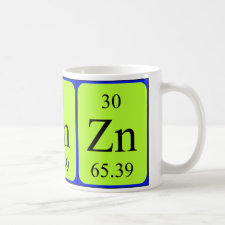
Authors: Metzger TS, Tel-Vered R, Albada HB, Willner I
Article Title: Zn(II)-Protoporphyrin IX-Based Photosensitizer-Imprinted Au-Nanoparticle-Modified Electrodes for Photoelectrochemical Applications.
Publication date: 2015
Journal: Advanced Functional Materials
Volume: 25
Issue: (41)
Page numbers: 6470-6477.
DOI: 10.1002/adfm.201502801
Abstract: The electropolymerization of thioaniline-modified Au nanoparticles (NPs) on thioaniline monolayer-functionalized electrodes in the presence of Zn(II)-protoporphyrin IX yields bis aniline-crosslinked Au NPs matrices that include molecular imprinted sites for binding the Zn(II)-protoporphyrin IX photosensitizer. The binding of the photosensitizer yields photoelectrochemically active electrodes that produce anodic photocurrents in the presence of the electron donor benzohydroquinone. The efficient photocurrents formed in the presence of the imprinted electrode are attributed to the high-affinity binding of the photosensitizer to the imprinted sites, Ka = 3.2 x 10^6 m-1, and to the effective transport of the photoejected electrons to the bulk electrode via the bridged Au NPs matrix. Similarly, a N,N'-dialkyl-4,4'-bipyridinium-modified Zn(II)-protoporphyrin IX photosensitizer-electron acceptor dyad is imprinted in the bis aniline-crosslinked Au NPs matrix. The photocurrent generated by the imprinted matrix is approximately twofold higher as compared to the photocurrent generated by the Zn(II)-protoporphyrin IX-imprinted Au NPs matrix. The efficient photocurrents generated in the presence of the bipyridinium-modified Zn(II)-protoporphyrin IX-imprinted matrix are attributed to the effective primary charge separation of the electron-hole species in the dyad structure, followed by the effective transport of the photoejected electrons to the electrode via the bis aniline-crosslinked Au NPs matrix
Template and target information: Zn(II)-protoporphyrin IX
Author keywords: Au nanoparticles, electropolymerization, molecular imprinting, photocurrent, porphyrin



Join the Society for Molecular Imprinting

New items RSS feed
Sign-up for e-mail updates:
Choose between receiving an occasional newsletter or more frequent e-mail alerts.
Click here to go to the sign-up page.
Is your name elemental or peptidic? Enter your name and find out by clicking either of the buttons below!
Other products you may like:
 MIPdatabase
MIPdatabase









